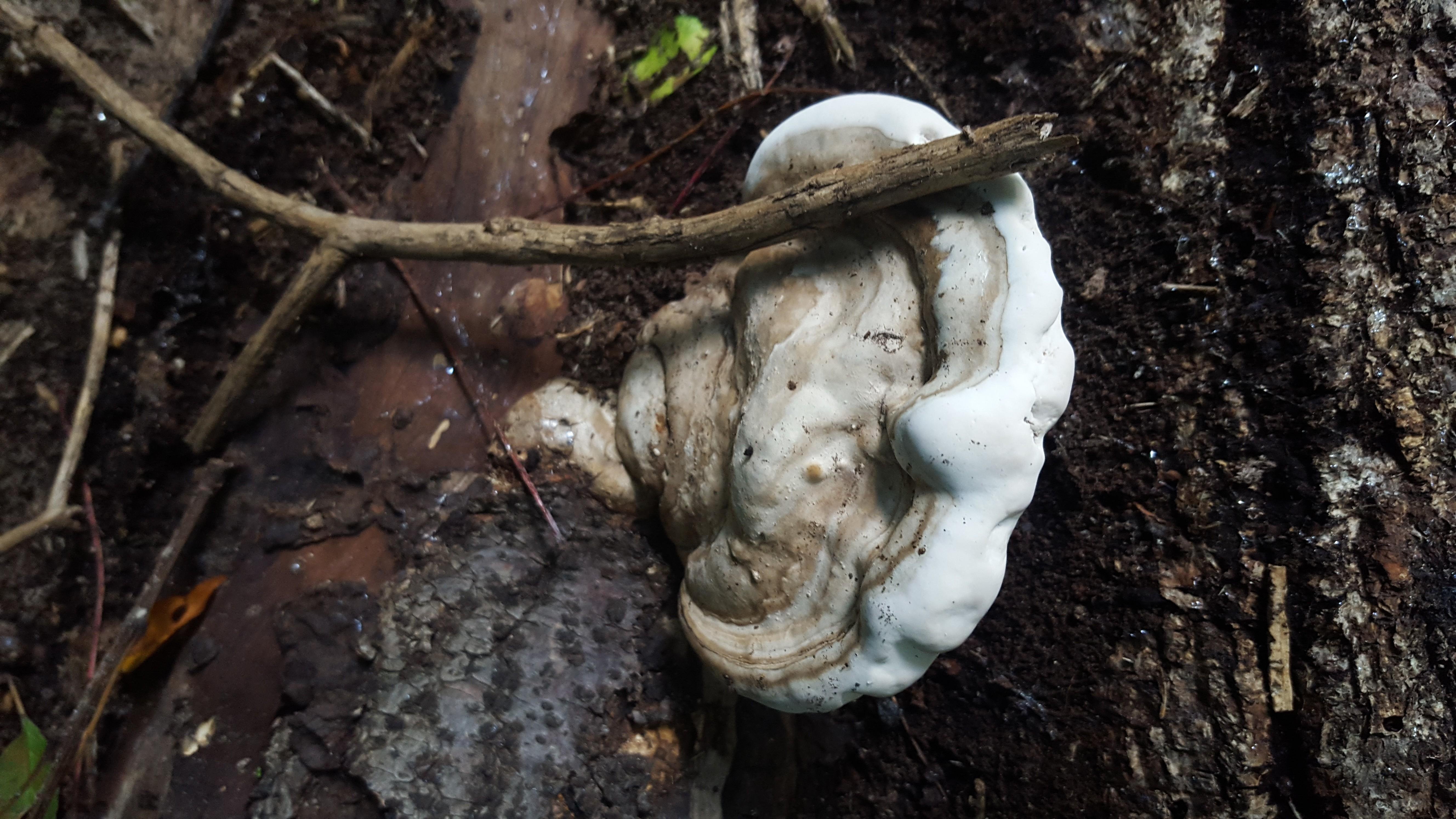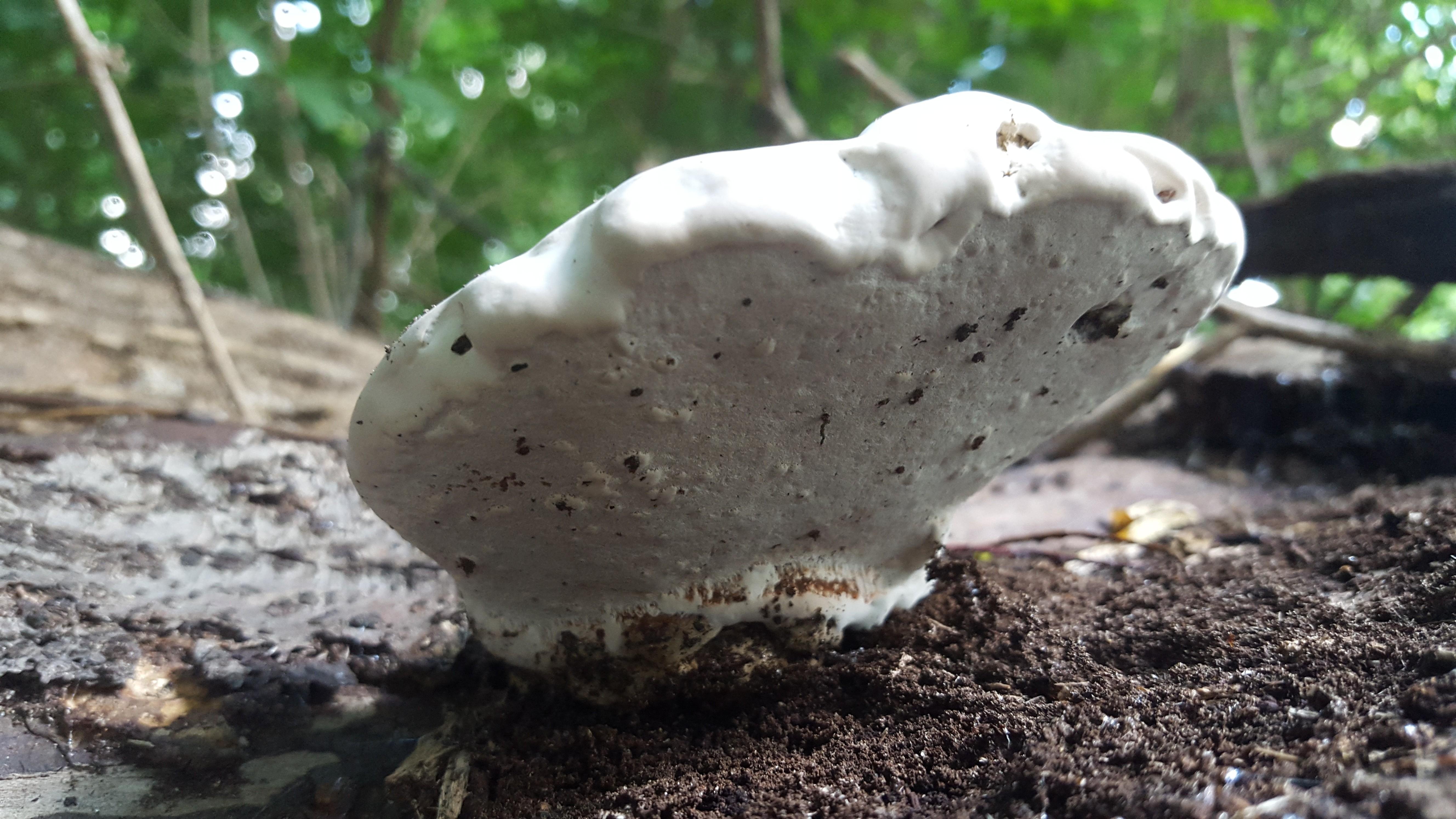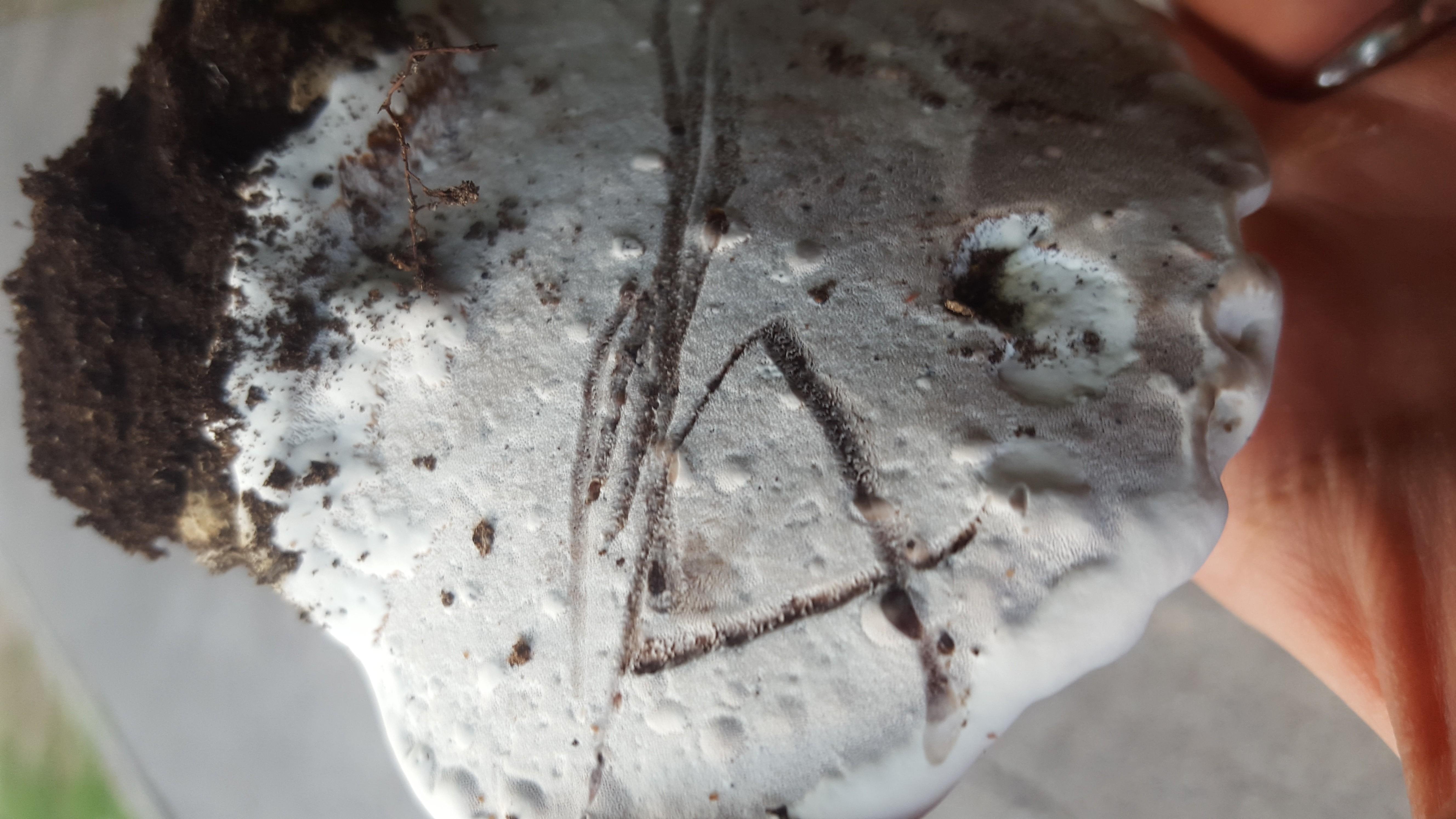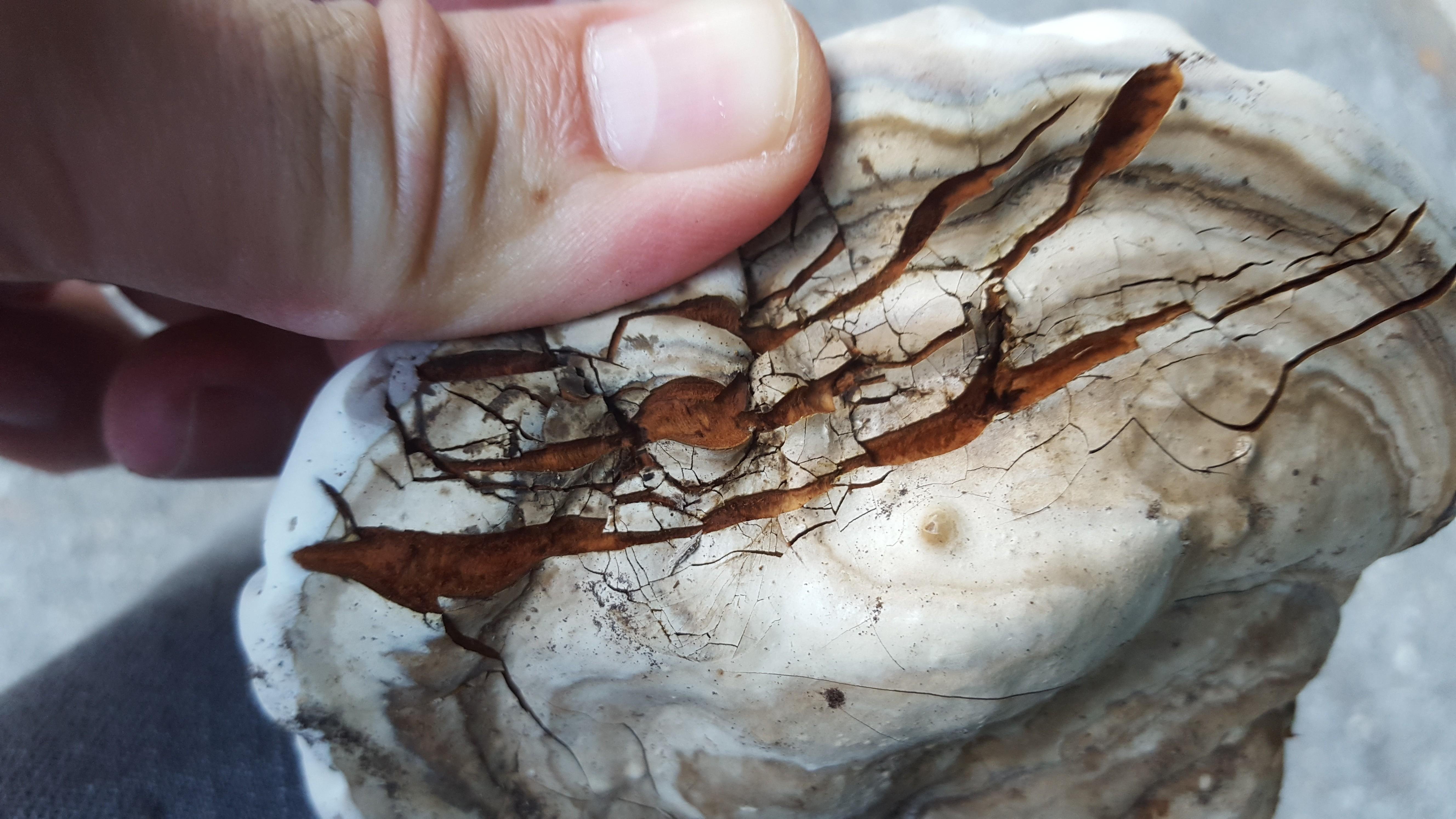These posts are not for foraging. They are intended for entertainment and intellectual satisfaction only. These posts are not a field guide nor comprehensive in any way - their accuracy is not assured in any way. Do not eat wild mushrooms unless you are a professional, have substantial professional assistance or have a wealth of personal experience with a specific species. Do not make any foraging decisions based on these posts. To do so could be dangerous or life threatening.
These Posts Contains No Information Regarding Edibility Or Toxicity

Passing a log of dead oak in some detritus by the highway, I saw this little guy.
All by his lonesome, this mushroom stuck out like a sore thumb. Its nubby little "stem", gray cap with brownish striations, and a white outer rim of new flesh, stood in stark contrast to the dark background of dead wood.
I decided to approach and take a look underneath.

Perfect white underside notwithstanding the small pieces of detritus.
Now I had a good idea what I was probably looking at. I wanted to do a more thorough examination, but hesitated about whether I ought to pick this mushroom. It was young and probably had not dropped a lot of spores yet. In the end, I decided to go ahead and take it - I knew the local kids would have destroyed it eventually - at least with me it would be memorialized forever on the blockchain.
Once I got it off of the log, I did the test that would go a long way toward an ID...

I "drew" on the bottom!
The results are those brown lines on the previously white surface. This is the primary characteristic for which G.applanatum, or the artist's conk, is known. A mature specimen can get quite large and provide a broad canvas for the creation of, sometimes, astonighly detailed artwork. None of it is creative commons, but do a google search and the results are, given the artistic medium, amazing
The drawings made on the mushroom can last for years if the mushroom is properly preserved and you can even purchase hand made conk drawings on etsy.
Pressure on the white underside will discolor the spore surface to a dark brown. However artists can also incorporate deeper carving into their work to reveal the unexpected cinnamon color flesh of the conk.
Take a look at the interior through the surface cracks

I wanted to get a cross section of the mushroom, but I had no knife to cut it.
I did try to break it half with my bare hands. In fact I tried for some time to do this. I twisted the cap edge up and down, over and over, using all of my (prodigious ;) ) strength, and the best I could get was the above photo.
I have a pointy little Gerber Shard on my key chain, effectively a tiny steel crowbar. I tried to wedge that into the cracks to force the flesh apart, but to no effect.
This is another defining characteristic of G.applanatum - the flesh is woody and very very tough.
In my efforts to tear this thing apart, I created a lot of surface damage, which caused the mushroom to become downright odiferous. It was giving off the mostly intense mushroomy odor, almost to the point of being distasteful. I carried it home with me and kept getting these overwhelming whiffs of a smell that might be called "condensed mushroom".
I have had this thing on a piece of glass for days now and there are two things of note:
It has not changed in color at all.
It has not dropped any visible spores.
This last bit is not surprising - getting a spore print from G.applanatum, or Ganodermas in general, can be difficult. In the case of G.applanatum, the mature mushroom is usually brown on top - a color derived from a dense covering of brown spores. Take a look:

My young mushroom was not ready to drop any collectable spores yet, either from the top or the bottom.
But based on all of the other characteristics I've identified, I feel pretty good about this ID.
Meanwhile, keep an eye out for G.applanatum - it's a hell of a lot cheaper to harvest one of these than to buy a stretched canvas.
Information Sources
Michael Kuo
Midwest American Mycology
Wikipedia On Species
Tom Volk
Photo Sources:
My own except the last one
James Lindsey, CC-2.5-SA, via Wikimedia commons
